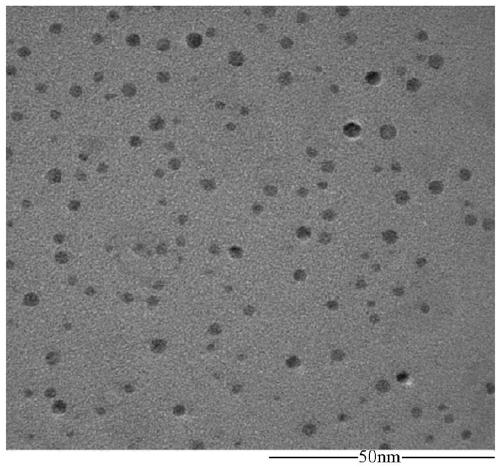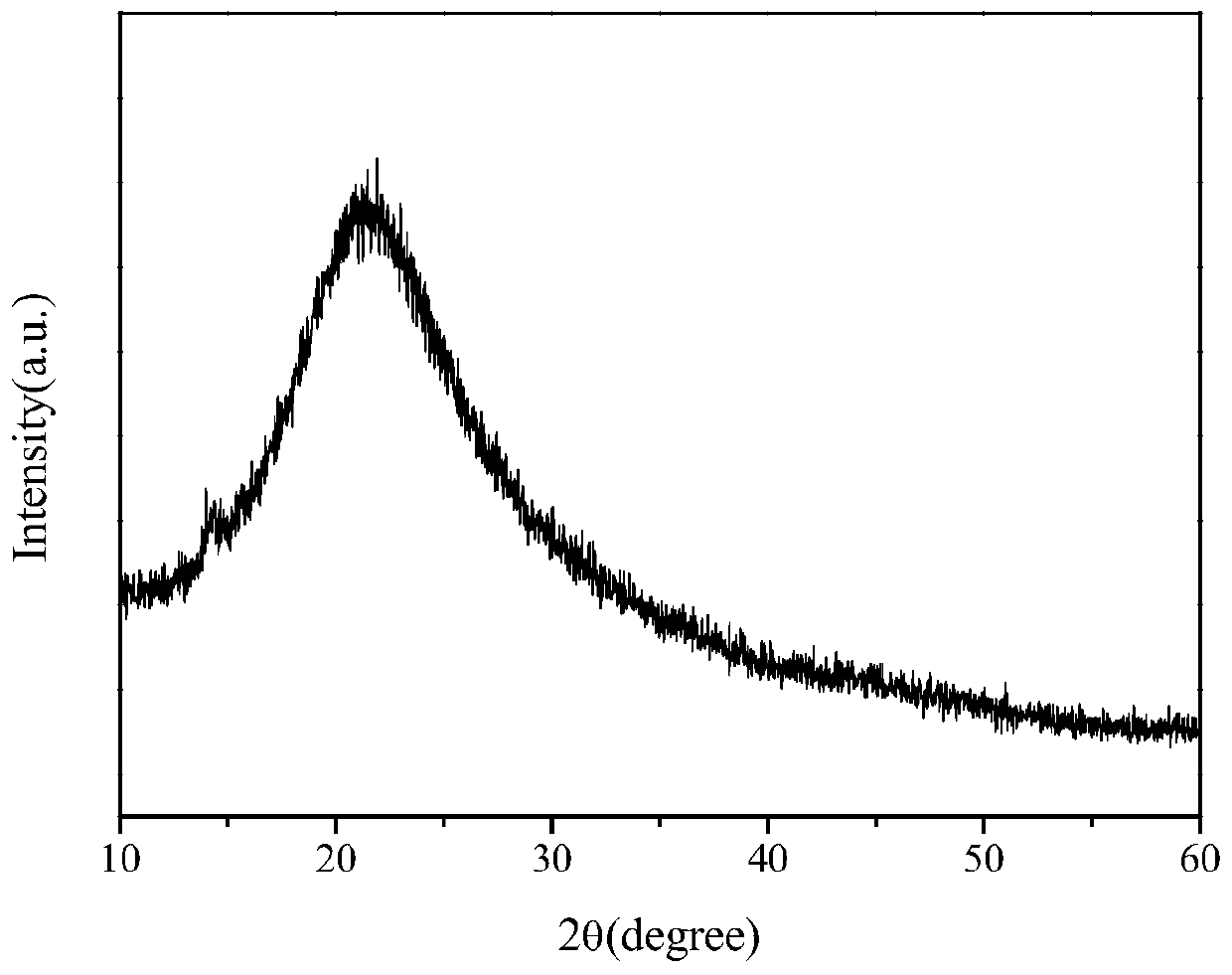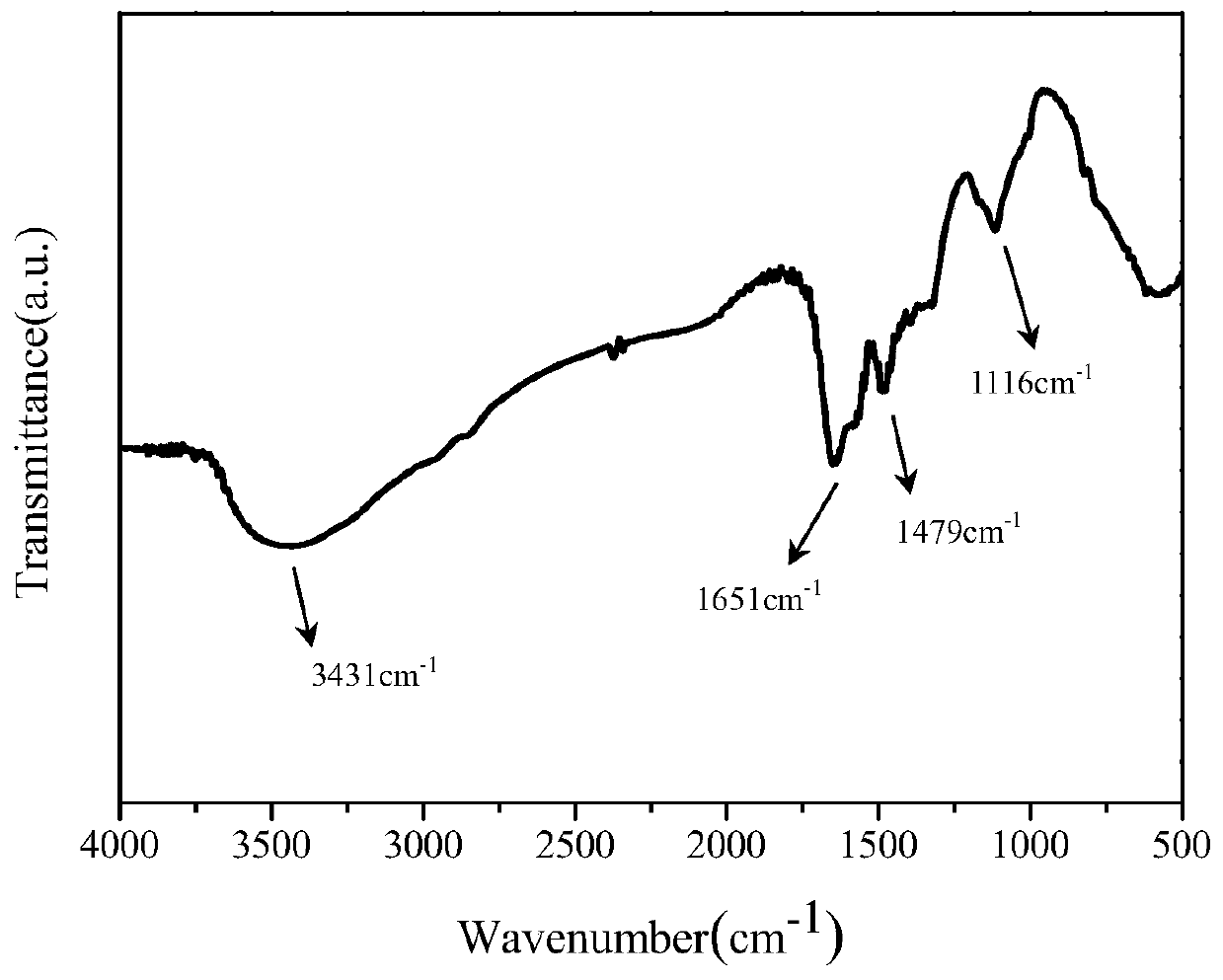Fluorescent carbon dot capable of realizing visible light excitation and long wavelength emitting, and preparation method and application thereof
A technology of fluorescent carbon dots and visible light, applied in fluorescence/phosphorescence, material excitation analysis, chemical instruments and methods, etc., can solve the problems of low carbon dots in fluorescence quantum yield, short emission wavelength, background fluorescence penetration, etc., to achieve The synthesis method is simple and effective, the reaction conditions are mild and controllable, and the raw materials are easy to obtain
- Summary
- Abstract
- Description
- Claims
- Application Information
AI Technical Summary
Problems solved by technology
Method used
Image
Examples
Embodiment 1
[0030] (1) Preparation method
[0031] At room temperature, add 100mg of quercetin and 400mg of glycine to 10mL of absolute ethanol, then put the resulting mixture into a reaction kettle lined with polytetrafluoroethylene, heat at 180°C for 7 hours, and cool to room temperature naturally Finally, add 1.5g PEI600, then put it back into the reaction kettle, heat at 160°C for 12 hours, naturally cool to room temperature, filter, centrifuge, and dialyze the supernatant to obtain fluorescent carbon dots, which are recorded as fluorescent carbon dots-1 .
[0032] The fluorescent carbon dot solution prepared in this example uses rhodamine B as a standard substance, and the measured fluorescence quantum yield is 32%.
[0033] The excitation wavelength is 470nm and the emission wavelength is 552nm.
[0034] (2) Results
[0035] 1, figure 1 Transmission electron micrographs of fluorescent carbon dots prepared for this example. Depend on figure 1 It can be found that the prepared f...
Embodiment 2
[0042] At room temperature, add 100mg of quercetin and 400mg of glycine to 10mL of absolute ethanol, then put the resulting mixture into a reaction kettle lined with polytetrafluoroethylene, heat at 180°C for 7 hours, and cool to room temperature naturally , add 1.5g of urea, then put it back into the reaction kettle, heat at 160°C for 12h, cool to room temperature naturally, filter, centrifuge, and dialyze the supernatant to obtain fluorescent carbon dots, which are recorded as fluorescent carbon dots-2.
[0043] The fluorescent carbon dot solution prepared in this example uses rhodamine B as a standard substance, and the measured fluorescence quantum yield is <6%.
[0044] The optimal excitation wavelength is 470nm and the emission wavelength is 560nm.
[0045] It can be seen that by adding urea as a passivating agent, the maximum excitation and emission wavelength of the obtained carbon dots is not much different from that of fluorescent carbon dots-1, but the fluorescence ...
Embodiment 3
[0047] At room temperature, add 100mg of quercetin and 400mg of glycine to 10mL of absolute ethanol, then put the resulting mixture into a reaction kettle lined with polytetrafluoroethylene, heat at 180°C for 7 hours, and cool to room temperature naturally Finally, add 1.5g of PEG, then put it back into the reaction kettle, heat at 160°C for 12h, naturally cool to room temperature, filter, centrifuge, and finally dialyze the supernatant to obtain fluorescent carbon dots, which are recorded as fluorescent carbon dots-3 .
[0048] The fluorescent carbon dot solution prepared in this example uses rhodamine B as a standard substance, and the measured fluorescence quantum yield is 23%.
[0049] The optimum excitation wavelength is 370nm and the emission wavelength is 458nm. Compared with fluorescent carbon dot-1, both excitation and emission wavelengths are blue-shifted, so fluorescent carbon dot-1 has excellent fluorescence performance.
PUM
| Property | Measurement | Unit |
|---|---|---|
| particle size | aaaaa | aaaaa |
Abstract
Description
Claims
Application Information
 Login to View More
Login to View More - R&D
- Intellectual Property
- Life Sciences
- Materials
- Tech Scout
- Unparalleled Data Quality
- Higher Quality Content
- 60% Fewer Hallucinations
Browse by: Latest US Patents, China's latest patents, Technical Efficacy Thesaurus, Application Domain, Technology Topic, Popular Technical Reports.
© 2025 PatSnap. All rights reserved.Legal|Privacy policy|Modern Slavery Act Transparency Statement|Sitemap|About US| Contact US: help@patsnap.com



